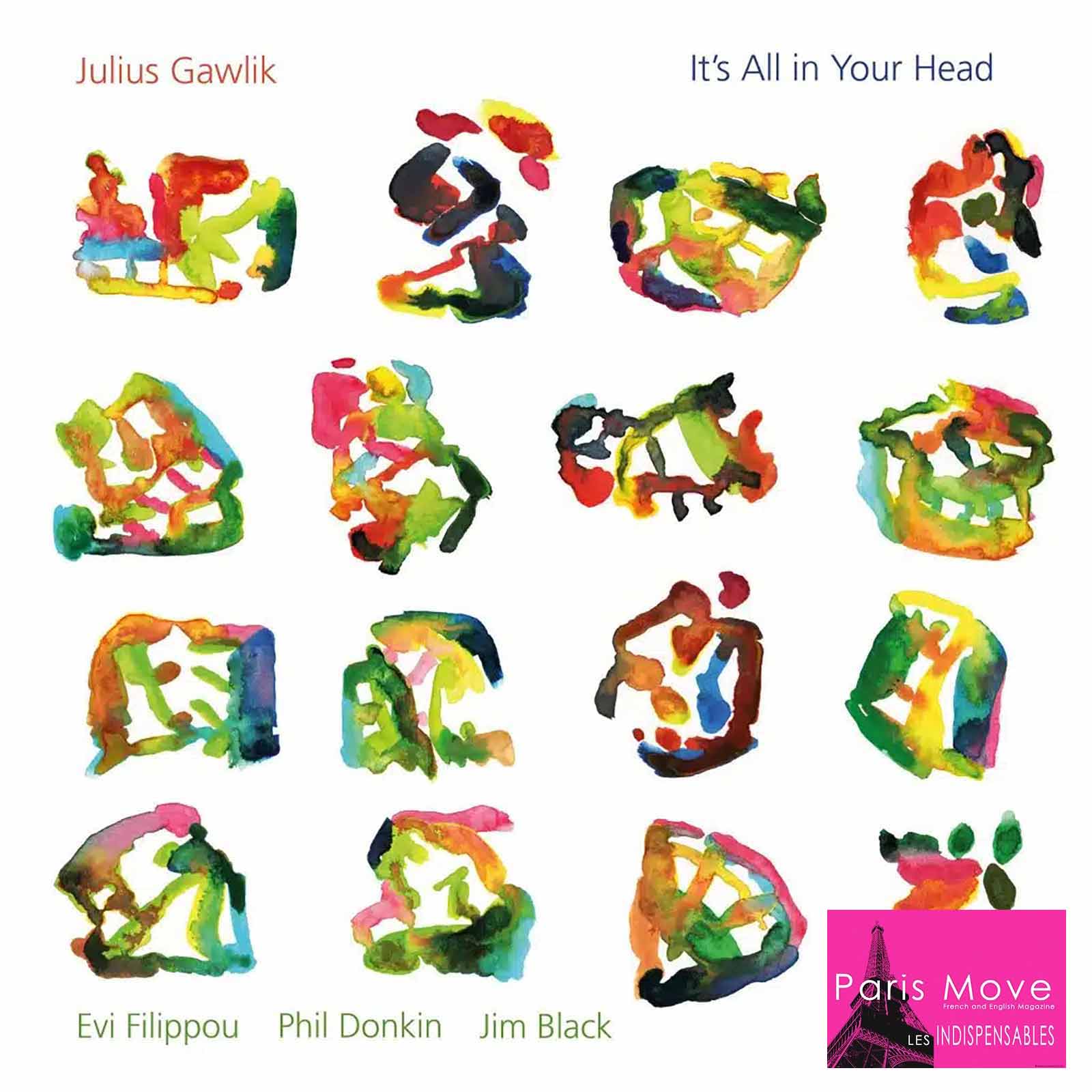| Jazz |

To understand Julius Gawlik, one must begin not with his virtuosity as a performer, but with his depth as a composer. Though still early in his career, Gawlik has already built a reputation that sets him apart within the European jazz and improvisational landscape. Once known as the youngest member ever to join the prestigious NDR Bigband, he now emerges as a mature musical thinker whose debut album, It’s All in Your Head, demonstrates a sophisticated synthesis of structure and spontaneity.
From the first bars, it is clear that Gawlik’s music defies stylistic boundaries. His compositions inhabit a space where sharp-edged melodies, intricate counterpoint, and open improvisation converge. Rather than leaning on established idioms, he constructs sound environments in which intensity and lyricism coexist, an aesthetic balance that recalls, in spirit if not in form, the works of Maria Schneider or Jim McNeely. Yet Gawlik’s approach feels distinctively his own: cerebral, searching, and grounded in an acute sense of form.
This album, which functions as both statement and experiment, reveals a composer determined to engage with the complexity of modern jazz while resisting its clichés. The music demands attentive listening, not because it is deliberately obscure, but because it operates at the porous frontier where composition and improvisation meet. In this regard, Gawlik belongs to a lineage of European artists, think Django Bates, Vince Mendoza, or Anna Webber, who view jazz not as a stylistic category but as an open process, an evolving language of ideas.
Gawlik’s credentials already speak to a rigorous formation. A recipient of the Temple University Soloist Excellence Scholarship and the Karl Hofer Gesellschaft Soloist Prize in Berlin, he has performed at leading festivals such as North Sea, London, and Copenhagen Jazz Festivals, and in major venues like Hamburg’s Elbphilharmonie and Amsterdam’s Bimhuis. These experiences have clearly informed his compositional discipline: It’s All in Your Head unfolds with the structural logic of chamber music and the freedom of collective improvisation.
In discussing the album, Gawlik describes his compositions as “sketches”, concise fragments of melody and rhythm designed to trigger improvisation rather than confine it. This method yields pieces that feel both controlled and unpredictable. One senses in his writing a fascination with contrast: sparse harmonic textures against energetic solo lines, ethereal melodies suspended over grounded rhythmic frameworks, abstract layers that gradually reveal their coherence. The resulting sound is dynamic, elastic, and deeply personalmusic that refuses to settle into predictable grooves or emotional shortcuts.
One of the most striking aspects of It’s All in Your Head is its restraint. Even at its most turbulent moments, the album never loses clarity. Gawlik’s saxophone playing, refined, precise, and emotionally deliberate, acts as a structural anchor rather than a vehicle for virtuosity. On tracks like “Fuchs,” the ensemble finds a fluid post-bop momentum, with rhythm and harmony interlocking in ways that feel both spontaneous and meticulously shaped. Elsewhere, slower pieces explore timbre and silence as compositional materials, echoing the spectral lyricism of contemporary European jazz.
For all its formal rigor, the album is not an intellectual exercise. There is warmth and humanity in Gawlik’s writing, a melodic sensibility that surfaces even in the most abstract passages. His music is emotionally articulate without being sentimental, reflective without being distant. That sense of balance, of maintaining beauty within complexity, may be what most defines his artistic identity.
It is worth noting how profoundly two experiences have shaped Gawlik’s perspective. His training in the United States introduced him to a more open and hybrid understanding of jazz composition, one that values risk and individuality. Meanwhile, his tenure with the WDR Big Band, a crucible of orchestral jazz innovation admired by figures like Bob Mintzer, exposed him to the mechanics of large-scale ensemble writing and the subtle interplay between written and improvised form. It’s All in Your Head can be heard as the confluence of these two worlds: the disciplined European ear and the exploratory American spirit.
Ultimately, Gawlik’s debut is less a collection of tunes than a study in the architecture of sound. It asks listeners to rethink what constitutes a “composition” in a jazz context, to hear form as a living organism, continually reshaped by the act of improvisation. In that sense, It’s All in Your Head belongs to a rare category of debut albums that not only introduce an artist but also articulate a vision.
For those drawn to music that approaches art as inquiry, music that provokes thought as much as emotion, Julius Gawlik’s first statement stands as a quiet revelation. It does not shout for attention; it earns it, through clarity, conviction, and an unwavering belief that sound, when shaped with intelligence and sincerity, can still surprise us.
Thierry De Clemensat
Member at Jazz Journalists Association
USA correspondent for Paris-Move and ABS magazine
Editor in chief – Bayou Blue Radio, Bayou Blue News
PARIS-MOVE, November 13th 2025
Follow PARIS-MOVE on X
::::::::::::::::::::::::
Musicians:
Julius Gawlik | Saxophone
Jim Black | Drums
Evi Filippou | Vibraphone
Phil Donkin | Bass
Track Listing:
There Are No Ugly Dogs
You Wish
Fuchs
Glow
Chicago
TSCH
Charis Karantzas: mixing engineer
Martin Ruch: mastering engineer
Niklaus Troxler/ Severin Koller: artwork/design
Recorded by Nanni Johansson at Hansa Studios Berlin in March 2024

